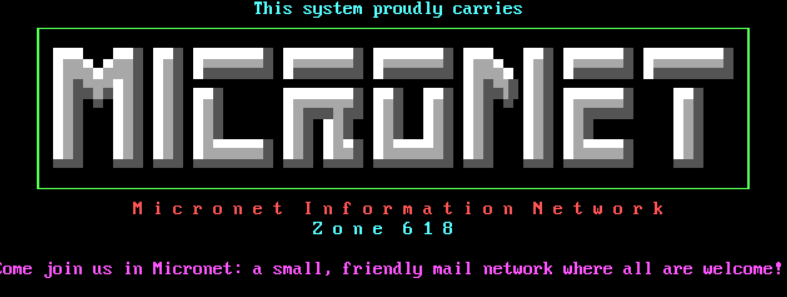European Space Agency and Arianespace at a crossroads
Date:
Sat, 09 Nov 2024 20:55:54 +0000
Description:
The European Space Agency (ESA) faces a crossroads as it works to prepare flights of The post European Space Agency and Arianespace at a crossroads appeared first on NASASpaceFlight.com .
FULL STORY ======================================================================
The European Space Agency (ESA) faces a crossroads as it works to prepare flights of the Vega-C and Ariane 6 as early as this December. While technicians in Europe and French Guiana are preparing these rockets and their payloads for flight, ESA and Arianespace are grappling with major changes in the space launch industry over the last decade.
The multinational agency was created in 1975 by France, Germany, the United Kingdom, and other European countries who realized that they could not
explore space by themselves on the scale of the United States and the Soviet Union. Over the decades, ESA has grown into an agency counting 22 nations as members and others as associate or cooperating states, and has achieved many notable successes and firsts.
ESA, though its budget is much smaller than NASAs, has accomplished a mission to Halleys Comet, the first landing on a comet, mapped the motions and positions of stars in the sky to a degree of accuracy never seen, sent probes into orbit around Venus and Mars, launched probes to Jupiter and Mercury, and much more. Image from the surface of Comet Churyumov-Gerasimenko taken by the Philae lander. (Credit: ESA/Rosetta/Philae/CIVA)
The agency has also cooperated in key international projects like the Hubble Space Telescope, Galileo, James Webb Space Telescope, the International Space Station, Spacelab missions, Chinas Change-6 lunar sample return, and more.
ESA astronauts have assisted in the repair of Hubble in 1993, flown on numerous Spacelab flights and ISS expeditions, and even trained with their Chinese counterparts for possible future flights. The Columbus module docked to ISS is ESAs permanent science facility on-orbit where a variety of science experiments are conducted.
However, recently, ESA has found itself having to launch missions like the Euclid Telescope, the Arctic Weather Satellite, and the Hera probe aboard SpaceXs Falcon 9. Europes independent access to space managed and marketed
by Arianespace was supposed to be sustained with the Vega-C, Soyuz, and Ariane 6 after the retirement of Ariane 5 in 2023. The ESAs Hera spacecraft mounted atop its Falcon 9 before being encapsulated in its fairing. (Credit: ESA)
Arianespace, founded in 1980, was the worlds first commercial space launch provider. Over the decades, the company became dominant in the commercial space launch market, not only launching ESA missions with its Ariane rockets but also flying many commercial geostationary communications satellites and European military payloads. Ariane 5, after its ignominious debut in 1996, flew many important missions before its 2023 retirement.
The small to medium lift Vega program including the upgraded Vega-C has
seen issues with the vehicle that has resulted in the loss of several missions. The original Vega launcher, developed by AVIO of Italy and launched by Arianespace out of Kourou, French Guiana, is now retired after two
failures in 22 flights.
Vega-C first flew in July 2022, but its second launch ended in disaster when the second stage Zefiro 40 motor suffered a failure. This failure was caused by unexpected erosion in the nozzles throat insert, leading to a redesign of the nozzle. The Pleiades-Neo 5 and 6 earth observation satellites were lost
in this mishap, and the vehicles return to flight is currently set for Dec. 3 of this year. Soyuz liftoff from Kourou with a host of OneWeb satellites. (Credit: Roscosmos, Arianespace, Starsem)
The medium lift Soyuz vehicle made its first flight from French Guiana in
2011 and launched a number of payloads from South America. The Russian-made rocket was marketed by Arianespace as a solution for payloads that needed a heavier rocket than Vega but did not need Ariane 5s heavy-lift capability.
However, the last flight of Soyuz from French Guiana occurred just two weeks before the Russian invasion of Ukraine. The Western-imposed sanctions against Russia has ensured that no Soyuz launches have occurred since, and it is not likely they will resume in the near future. The war in Ukraine is still ongoing, and the Vega-C and Ariane 6 rockets are filling in the market space Soyuz commanded.
The Ariane 6 project was conceived in the early 2010s as Ariane 5s replacement, and its initial launch was set for 2020. The COVID-19 pandemic added to normal development delays, and its debut slipped past the Ariane 5s final launch in 2023. The Ariane 6, which is marketed in two variants, the Ariane 62 with two solid rocket boosters (SRB) and the heavier lift Ariane 64 with four SRBs, finally made its first flight on July 9, 2024. Ariane 6 launching on its first flight from ELA-4 at Kourou, French Guiana on July 9, 2024. (Credit: ESA/S. Corvaja)
The Ariane 62 VA262 flight successfully made it to orbit but was unable to make its final burn due to an auxiliary propulsion unit failure that disabled the second stages restartable Vinci engine. Despite this failure to achieve a test objective, the next Ariane 6 flight is scheduled for no earlier than
this December.
Europe is finally starting to regain its independent access to space, but the downtime between Ariane 5s retirement and Ariane 6s first flight caused ESA
to book several missions on Falcon 9 as the rocket was the only way the missions could achieve a timely launch. The Vega-C and Ariane 6 rockets also have no reusability features and their costs are not likely to approach
Falcon 9 levels, making them less competitive in the world space launch marketplace.
Europes space sector has started to respond to SpaceXs domination of the
world space launch market, although progress has been slow and uneven. Last month, ESA selected four companies ArianeGroup (Arianespaces parent
company), Rocket Factory Augsburg (RFA), Isar Aerospace, and The Exploration Company to help develop reusable launch vehicle technology. RFA One Render. (Credit:RFA)
Companies like RFA and Spains PLD Space are developing new launch vehicles, though RFA suffered a recent setback when its RFA One rocket exploded during
a static test firing at the SaxaVord launch facility in Scotland. PLD Space has successfully flown its Miura 1 demonstrator on a suborbital flight and is developing the Miura 5 satellite launch vehicle.
Miura 5 is designed to reuse its first stage. Other reusable spacecraft efforts in Europe include the SUSIE reusable upper stage, which is a concept but not yet approved. The Space Rider spaceplane has been approved and is under development. Space Rider is not the first ESA reusable spaceplane project; the Hermes program was working on a Sierra Space DreamChaser-like reusable spaceplane mounted on an Ariane 5 before it was canceled due to high costs after the Cold War ended.
ESA is currently working on the Themis reusable rocket prototype and the Prometheus reusable rocket engine, which uses methane and liquid oxygen as propellants. The 100 tonne thrust Prometheus engine has already conducted
test firings, while Themis is still in its early stages. A series of SpaceX Grasshopper-like atmospheric flight tests are currently planned for the vehicle. Prometheus full ignition, ArianeGroup test centre Vernon, France 22 June 2023. (Credit: ArianeGroup)
The European space sector is grappling with staying competitive and relevant in a world where the Falcon 9 is now able to fly at least 100 times a year, and where Starship is successfully demonstrating the Super Heavy boosters ability to return safely to its launch pad. Future reusable, or at least partially reusable, vehicles could well become part of Europes spaceflight future, but European reusable space launch technology is still in its early stages of development.
(Lead image: Ariane 6 at its launch pad in French Guiana. Credit: ESA)
The post European Space Agency and Arianespace at a crossroads appeared first on NASASpaceFlight.com .
======================================================================
Link to news story:
https://www.nasaspaceflight.com/2024/11/esa-arianespace-crossroads/
--- Mystic BBS v1.12 A47 (Linux/64)
* Origin: tqwNet Science News (1337:1/100)







